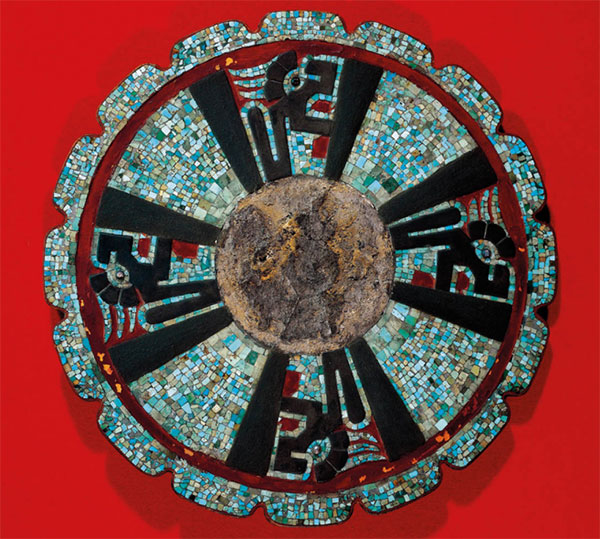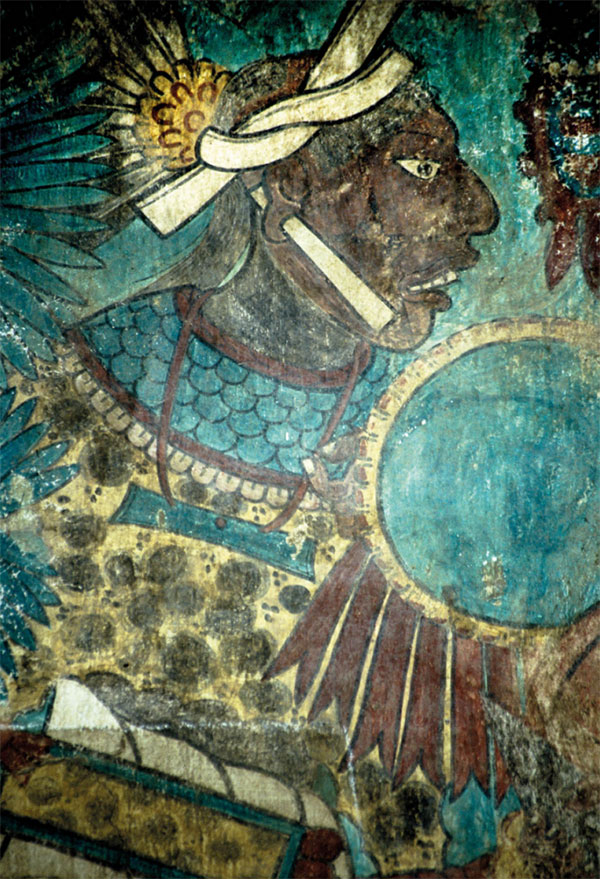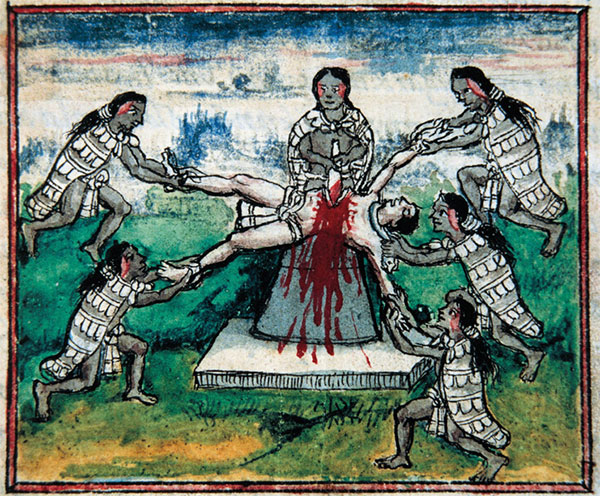EARLY HISTORY
More than 12,000 years of history has riddled the Central American isthmus with mysteries that are only just being solved.
Human settlement of Central America dates back thousands of years. Hunter-gatherers are first thought to have arrived in the region around 10,000 BC, and spears and tools dating from 9000 BC have been unearthed in the Guatemalan highlands. By 2000 BC villages were beginning to be established along the Pacific coast. These Pacific coast people seem to have subsisted primarily on shellfish, fish, and iguanas. Meanwhile, evidence has emerged that villages up in the Petén were in place by around 1700 BC, and by 1100 BC the first rudimentary ceremonial structures were being built at Nakbé; the first temples were added by 750 BC. Gradually more and more Preclassic settlements began to flourish in the northern Petén, above all the giant city of El Mirador. The hub of the first empire in the Americas, El Mirador grew to obtain superpower status by the time of Christ, when its population approached 100,000 – its center crowned by a triadic temple complex that reached over 70 meters (230ft). Outside the northern Petén, most Maya still lived as farmers, cultivating maize and other vegetables, living in small family units.
In the courtyards in front of the palaces, the Maya placed stelae or free-standing stone columns on which the figure of the ruler who put up the building is shown, with elaborate dating and details of his dynastic position inscribed in hieroglyphic writing.
These ordinary Maya were governed by an elite who enjoyed religious and military power, and who passed the power on in dynasties. They increasingly celebrated that power in vast ceremonial buildings, and in inscriptions and stelae (carved stone monuments) that recalled their deeds as well as depicting their gods. By AD 250–300, what is known as the Classic period of Maya civilization had begun. This lasted until approximately AD 900 and is the period when most of the great Maya centers were built.

Mayan mosaic disk, circa AD 900–1200, Chichén Itzá.
One of the most important early centers was at Kaminaljuyú, close to modern Guatemala City. Here, local obsidian was worked into tools and traded all over Maya territory. More than 400 ceremonial mounds have been located at Kaminaljuyú, though these have mostly been lost to urban sprawl.
Archeological remains
Tikal (for more information, click here), the second great city to emerge in Petén, is one of the few Maya centers to have been fully excavated, giving a good idea of how a settlement might have looked some 1,200 years ago. Archeologists estimate it was home to a population of perhaps 80,000 at the peak of the Classic period. The city was grouped around an imposing ceremonial core of palaces, courtyards, and pyramids, with broad causeways connecting the center to other parts of the city. The temple-pyramids were built on a base of earth and rubble and covered with limestone blocks. At the summit of these pyramids were narrow rooms decorated with plaster and vividly painted with murals, probably reserved for sacred rituals. The whole construction was topped off with a further extension – a roof comb of stone that adds height and solemnity, and was usually covered in brightly painted stucco reliefs.

Detail of a fresco depicting a warrior, Cacaxtla.
The other main ceremonial centers, such as Palenque, Calakmul, Piedras Negras, Yaxchilán, Copán, Yaxhá, Uxmal, and part of Chichén Itzá were also built during the Classic period. These sites show not only the complexity of the religious beliefs of their inhabitants, but also their fascination with astronomy and time, the strong hierarchy in their society, and their sense of history as reflected in the written inscriptions on the many stelae erected.
The Classic Maya held deep religious beliefs. They thought that the gods found their purpose in the creation of mankind, who repaid them for their existence by showing fidelity to them and the rituals the gods demanded. They conceived of the world as flat and square (some paintings and codices suggest it was seen as the back of a huge crocodile floating in a pond full of waterlilies), and among their most important gods were the four Bacab who occupied each corner of the square. Each god was identified with a color (white for north, yellow for south, red for east, and black for west), and between them they held up the heavens, where the other gods lived.
The Maya not only engraved monuments with hieroglyphs depicting their gods and their history; they also wrote and drew about their beliefs on long strips of tree bark or animal hides. These were then folded like a screen to form books, or codices. When the Spaniards arrived in the 16th century, hundreds of these sacred books were in existence. Bishop Diego de Landa in Yucatán had an important collection of them, but in 1562 he decided they were all heretical, and so organized a huge burning of his collection of manuscripts.
Because of this and other accidents or deliberate acts of destruction, only four of the ancient Maya codices have survived to our day. Three of them are known after the cities where they can be found: Dresden, Madrid, and Paris. The fourth, which came to light in the 1970s, is named the Grolier Codex after the association of bibliophiles who helped identify it; this is the only one still in Mexico.
War and sacrifice
Although for many years the idea prevailed that the Maya were a peaceful people, interested only in science and art, we now know they were just as warlike as any of the other civilizations of Mesoamerica. In the ever-changing power politics of the time, the elite cities formed a network of alliances with minor settlements, contested trade routes, and fought for hegemony in outright warfare, such as Tikal’s famous defeat at the hands of Calakmul and Caracol in the battle of 562. Warfare was essential for the capture of prisoners, as the Maya used human sacrifice as a guarantee of cosmic order, to help ensure that nature did not destroy mankind. These sacrifices were used to mark important dates in the Maya calendar and to glorify victories in battle, with prisoners ritually killed (by decapitation or by the removal of their hearts) to appease the Maya gods and mark the accession of a new ruler.
Religion and class
Maya rulers were also religious leaders, governing the masses along with shamans and priests, who were experts on calendrics and ritual. In the tomb of one of these leaders, Pakal, at Palenque, he is carrying a jade sphere in one hand and a dart in the other, representing the powers of heaven and earth. On the lid of his sarcophagus is a sculpture of a dragon in the form of a cross. This is the dragon Itzamna, the most powerful god in the Maya pantheon; dozens of other gods were associated with everything from planting corn to sex. Religious ritual was primarily concerned with honoring the correct god on the correct day of the calendar. Preceding an important event, the Maya priests and rulers would fast and remain abstinent. Then a ceremony would take place, involving bloodletting (by pricking the tongue, ears, and genitals), the participants under the influence of alcohol and hallucinogenic mushrooms.

Image of an Indigenous sacrifice.